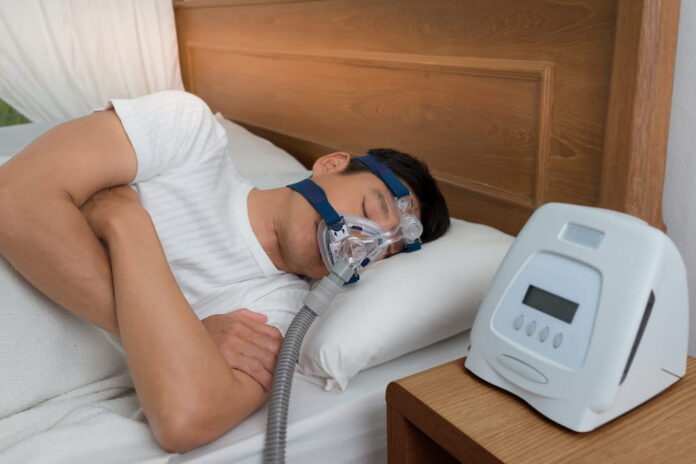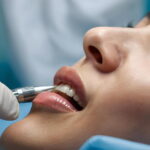Continuous Positive Airway Pressure (CPAP) therapy is a common and effective treatment for obstructive sleep apnea (OSA). If you’ve been prescribed a CPAP machine, understanding how it works, how to maintain it, and how to troubleshoot common issues can enhance your therapy experience and improve your sleep quality. Here’s what you need to know about your CPAP machine.
How CPAP Machines Work
A CPAP machine provide a steady stream of air through a mask that you wear while you’re sleeping. This airflow keeps your airway open, preventing the pauses in breathing that characterize sleep apnea. The key components of a CPAP system include:
– The Machine: This generates the pressurized air and often includes features like ramp settings, which gradually increase the air pressure to help you fall asleep more comfortably.
– The Hose: This connects the machine and mask to each other and delivers the pressurized air.
– The Mask: The mask comes in various styles (nasal, nasal pillows, or full-face) to suit different comfort needs and sleeping habits.
Selecting the Right CPAP Machine
There are different types of machines available, and you can shop CPAP machines online in Canada along with associated parts:
– Standard CPAP: Delivers a continuous fixed pressure.
– Auto-Adjusting CPAP (APAP): Adjusts the pressure automatically based on your needs throughout the night.
– Bi-Level PAP (BiPAP): Provides two levels of pressure: one which is higher when you inhale and a lower one when you exhale. This machine is often used by patients who need higher pressure settings or have difficulty exhaling against constant pressure.
Getting the Right Mask
Choosing the right mask is important for comfort and effective therapy. Masks come in various types:
– Nasal Masks: These go over the nose and are suitable for people who breathe through their nose.
– Nasal Pillow Masks: This type of mask sits at the nostrils and has minimal facial contact.
– Full-Face Masks: These go over the nose and mouth, and are ideal for people who breathe through their mouth or those with nasal congestion.
Maintaining Your CPAP Machine
Regular maintenance of your CPAP machine is essential for hygiene and effective operation:
– Daily Cleaning: Wash the mask cushion, headgear, and tubing with mild soap and warm water. Rinse thoroughly and let them air dry.
– Weekly Cleaning: Clean the humidifier chamber (if your machine has one) and the non-disposable filter with soapy water.
– Replacing Parts: Regularly replace parts such as the mask cushion, filters, and tubing as per the manufacturer’s recommendations to ensure optimal performance and hygiene.
Common Issues and Troubleshooting
CPAP users may encounter some common issues:
– Mask Leaks: Ensure your mask fits properly and the cushion is intact. Adjust the straps or consider a different mask size or type if leaks persist.
– Dryness and Congestion: Use a CPAP humidifier to add moisture to the air, which can prevent dryness and nasal congestion. Adjust the humidity level to find the most comfortable setting.
– Noise: If your machine is noisy, check for air leaks and make sure the machine is on a stable surface. Some noise is normal, but excessive noise may indicate a problem with the machine or mask.
Traveling with Your CPAP
Traveling with your CPAP machine requires some planning:
– Portable Machines: Consider investing in a travel-friendly CPAP machine, which is smaller and more compact.
– Power Supply: Make sure you have the appropriate power adapters and a portable battery if you’re traveling to places without reliable electricity.
– Airline Travel: Most airlines allow CPAP machines as carry-on medical devices. Check with the airline beforehand and make sure you carry a copy of your prescription.
Working with Your Healthcare Provider
Regular follow-ups with your healthcare provider are important to ensure your CPAP therapy is effective. They can help you with:
– Pressure Adjustments: Periodically reassess your pressure settings and adjust if necessary.
– Troubleshooting: Address any persistent issues or discomfort you may be experiencing.
– Equipment Updates: Stay informed about new CPAP technologies and upgrades that might benefit your therapy.
Conclusion
Understanding your CPAP machine and how to use it effectively is vital for managing sleep apnea and improving your sleep quality. By selecting the right equipment, maintaining it properly, and addressing any issues that arise, you can maximize the benefits of your CPAP therapy. Regular communication with your healthcare provider will ensure your treatment remains effective and comfortable, leading to better health and well-being.
Did you find this helpful? Check out our other helpful articles on our website.
Read Also
- Ketamine-Assisted Therapies: Impacts on Employee WellbeingWorkplace stress is common today. Many employees feel tired, anxious, or burned out. Regular therapy can help, but some people need more support. Ketamine-assisted therapy is showing good results for mental health. A ketamine-assisted therapist guides each session safely. This therapy can improve mood, focus, and energy. Learning more about it can help teams stay… Read more: Ketamine-Assisted Therapies: Impacts on Employee Wellbeing
- The Future of Men’s Health: Why Telehealth Is Here to StayTelehealth isn’t just a pandemic trend that faded into the background. For Australian men, it has become one of the most practical, time-saving, and stress-free ways to manage everyday health — and it’s shaping the future of how we access care. Platforms like DOCTO, an Australian online doctor and specialist telehealth service, are leading the… Read more: The Future of Men’s Health: Why Telehealth Is Here to Stay
- How to Build a Simple, Clean Skincare Routine ?You don’t need a complicated skincare routine. It doesn’t have to be something that requires twenty different products and confusing steps. Your routine works well with just a few high-quality clean ingredients. The beauty industry keeps pushing more products, but your skin actually needs less. You only need a simple approach to get better results… Read more: How to Build a Simple, Clean Skincare Routine ?
- How Preventive Dental Care Supports Overall HealthHave you ever wondered how a simple dental checkup could impact your entire body? Oral health is more than just a bright smile. Studies show that poor dental habits can contribute to serious health problems. Gum disease and tooth decay are linked to heart disease, diabetes, and infections. Yet, many people overlook preventive dental care.… Read more: How Preventive Dental Care Supports Overall Health
- Seeing Clearly in a High-Tech World: A Deep Dive into Advanced Vision Care ServicesProtecting your eyesight isn’t optional—it’s essential. Modern eye care has evolved far beyond basic exams, offering advanced diagnostics, personalized treatments, and surgical innovations that keep vision sharp for life. A leading example is Intermountain Eye Center, home to specialists like Dr Fishburn Boise, where patients receive comprehensive, high-level vision care designed to preserve long-term eye… Read more: Seeing Clearly in a High-Tech World: A Deep Dive into Advanced Vision Care Services
- Why the Keto Diet Works for Some People—and Fails Dramatically for Others: An Ayurvedic Breakdown for Modern HealthcareThe keto diet has dominated weight-loss culture for years. For some people, it produces rapid fat loss, stable energy, and improved mental clarity. For others—especially those who gain weight easily—it leads to burnout, digestive distress, rebound weight gain, high cholesterol, and a metabolism that feels slower than before. Healthcare often frames this as a discipline… Read more: Why the Keto Diet Works for Some People—and Fails Dramatically for Others: An Ayurvedic Breakdown for Modern Healthcare
- How to Choose the Best Assisted Living Facility for SeniorsAre you looking for the right assisted living facility for a senior loved one? Choosing a place can feel overwhelming. There are many factors to consider, from care services to the environment. Safety, comfort, and social opportunities play important roles in daily life. Each senior has unique needs and preferences that must be met. Understanding… Read more: How to Choose the Best Assisted Living Facility for Seniors
- Burn Smart, Not Hard; Shape Burn: Clean Protein for Weight ManagementYou want to feel light, strong, and confident. You don’t want crash diets or fake promises. You need a plan that works with your body, not against it. That’s where Shape Burn comes in. You can burn fat without losing strength. You can eat better and stay full. You can manage weight in a way… Read more: Burn Smart, Not Hard; Shape Burn: Clean Protein for Weight Management









